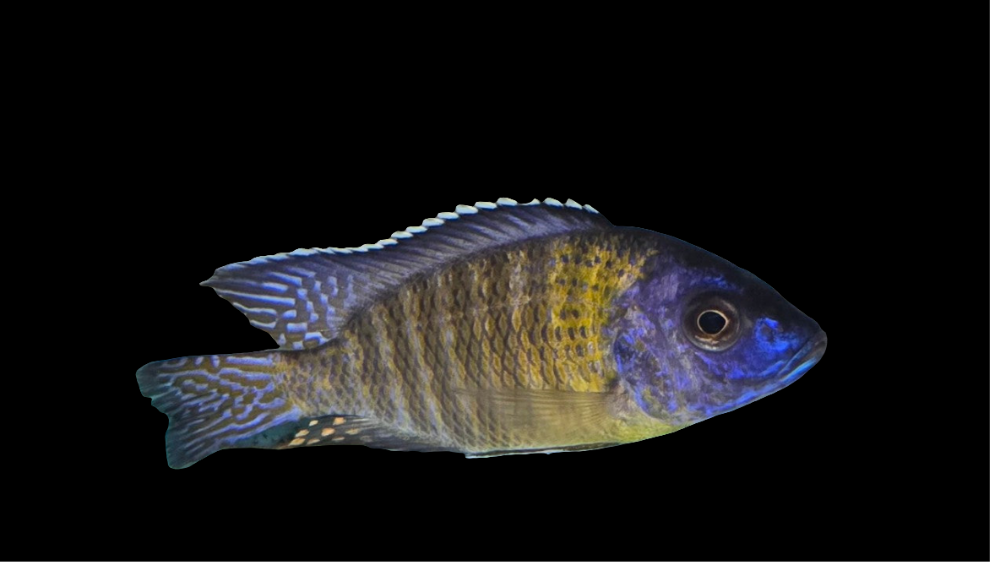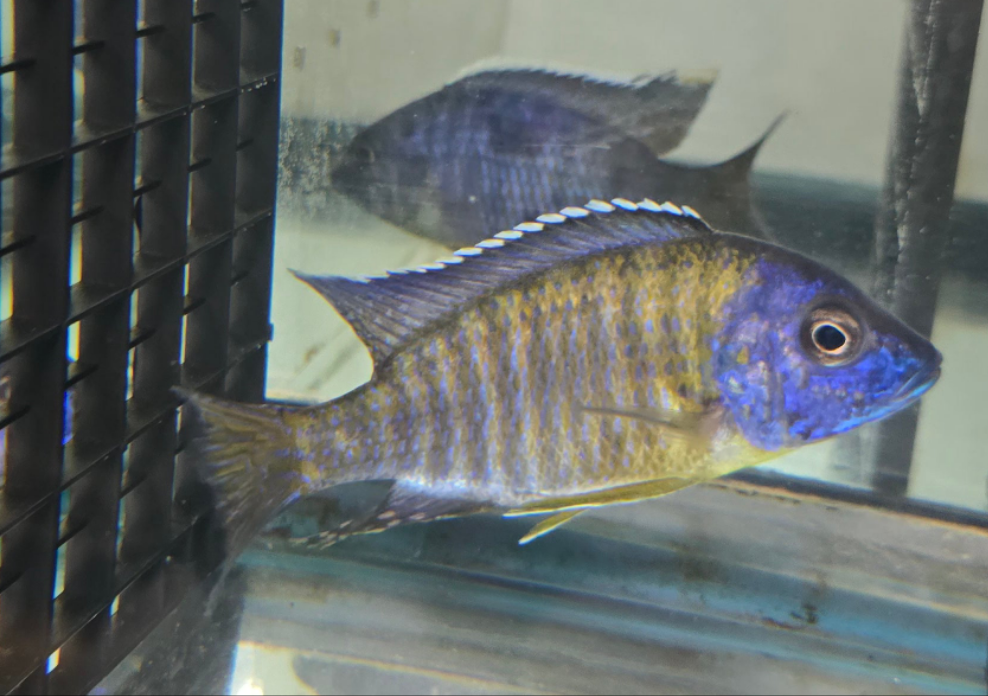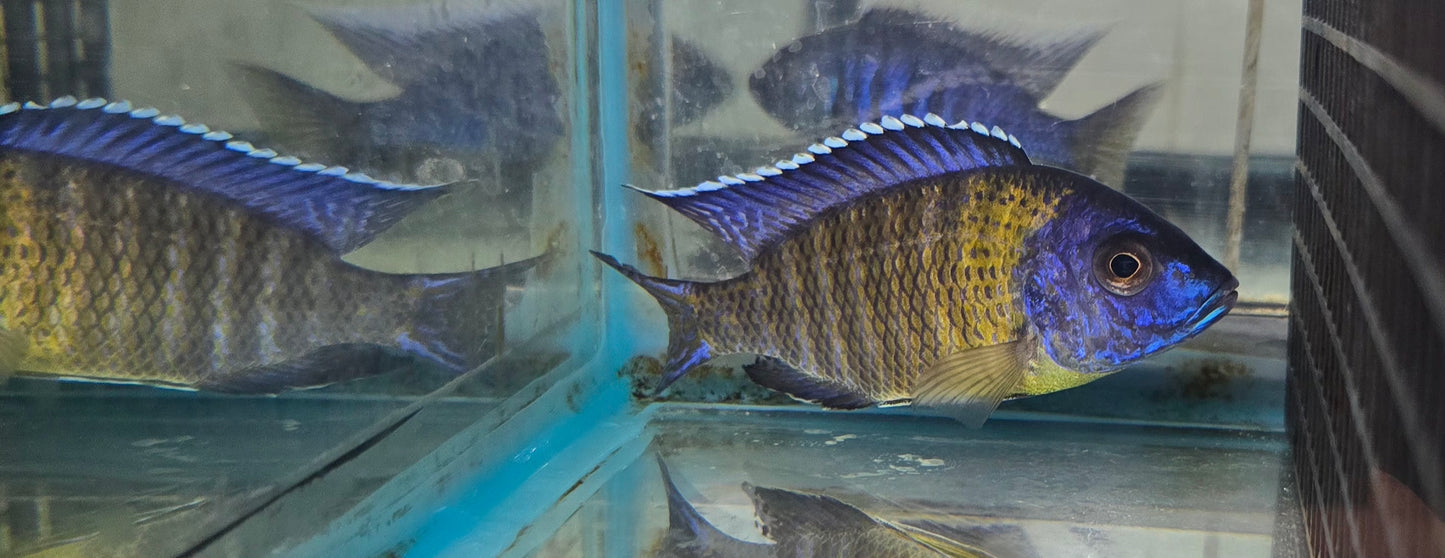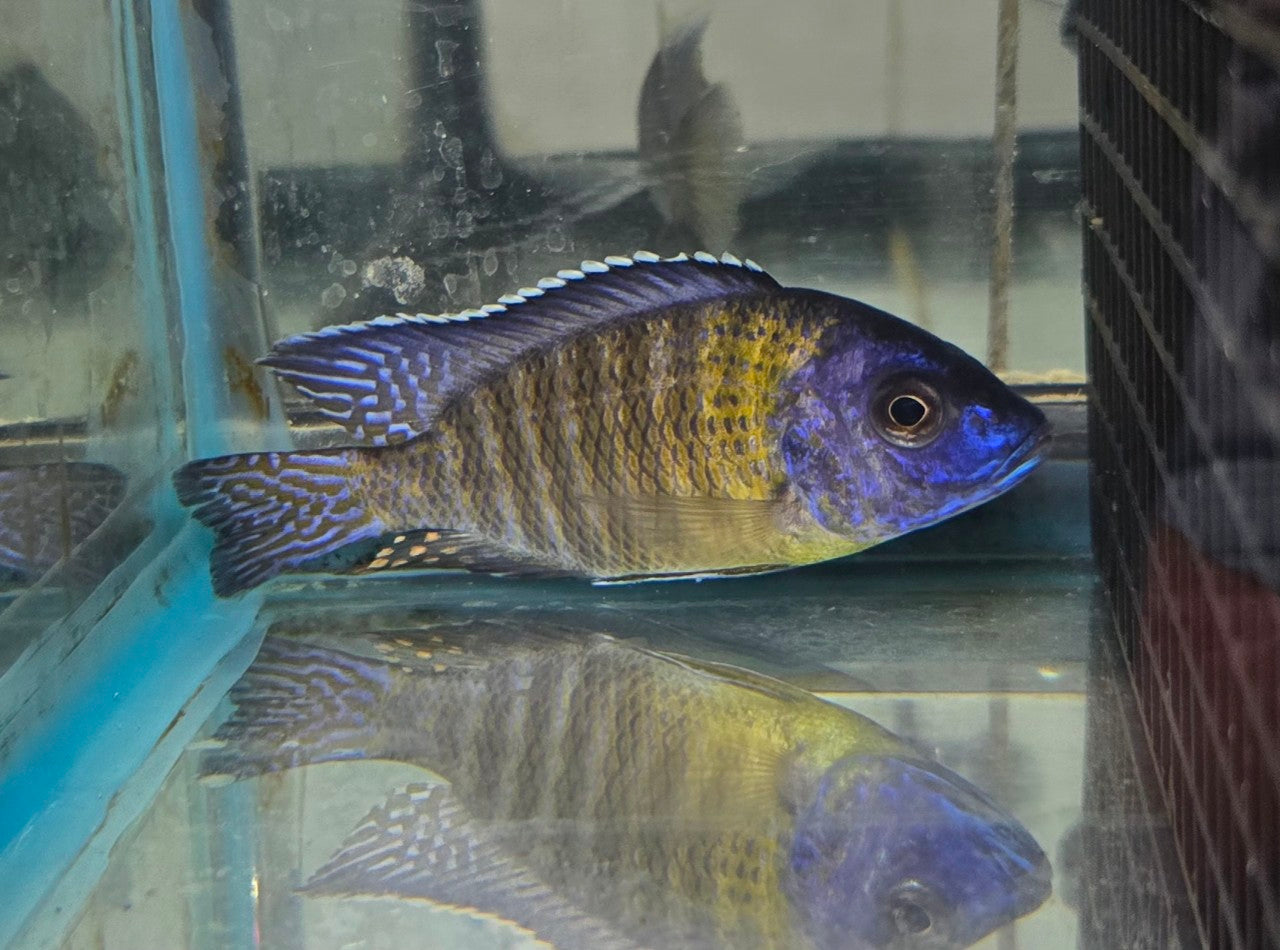J&J Cichlid Addiction
Blue Neon
Blue Neon
Couldn't load pickup availability
Aulonocara Stuartgranti
- Guaranteed Male 4.5"+ -
Appearance: Males are brightly colored, exhibiting a vibrant blue body with distinctive orange markings, especially on their gills and dorsal fin. Females have a more subdued olive-to-taupe coloration.
Size: Adults typically reach 4 to 6 inches in length.
Temperament: Blue Neon Peacocks are generally semi-aggressive, particularly during breeding, where males can be territorial. Keeping a higher ratio of females to males (at least 3 females per male) can help manage aggression.
Natural Habitat: They prefer rocky environments with sandy substrates in Lake Malawi, where they find shelter among rocks and open swimming areas.
Aquarium care
Tank size: A minimum of 55 gallons is recommended for a group of Blue Neon Peacock Cichlids to allow for territory establishment and reduce aggression. A 75-gallon tank is even better for an all-male tank and for combining with other fish. A breeding tank is often recommended due to potential aggression from a guarding pair.
Substrate and Decor: Use fine sand or gravel to mimic their natural habitat. Provide plenty of rocks, caves, and hiding spots to create territories and reduce stress. Ensure open swimming areas are also available.
Water conditions: They thrive in hard, alkaline water with a pH of 7.8-8.6 and a temperature of 76-82°F. Regular water changes (20-30% weekly) and monitoring water parameters (ammonia, nitrites, nitrates) are crucial.
Diet: Blue Neon Peacocks are omnivorous, requiring a varied diet including high-quality cichlid pellets, flakes, and live or frozen foods such as brine shrimp, bloodworms, daphnia, and occasional vegetable matter. Avoid feeding mammalian meat and tubifex worms, which can cause Malawi bloat.
Feeding schedule: Feed small portions twice daily, ensuring they consume all the food within a few minutes to prevent overfeeding and water quality issues.
Tank mates: Blue Neon Peacocks can coexist with other African cichlids of similar size and temperament, such as other Peacock Cichlids and some larger community fish that tolerate similar water conditions. However, avoid overly aggressive species or fish small enough to be prey.
Breeding: They are mouthbrooders, with the female carrying the eggs and fry in her mouth for about three weeks. Breeding can be encouraged by providing a sandy substrate and flat rocks. Separating the female into a breeding tank after spawning is advisable to reduce stress and protect the fry. The fry can be fed newly hatched brine shrimp or powdered fry food.
Share








